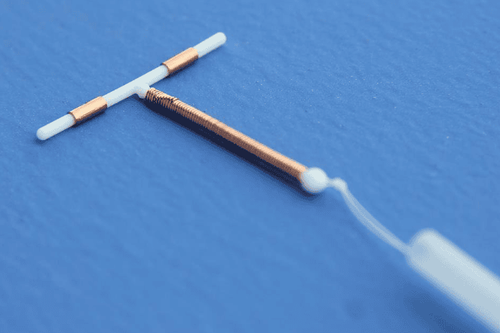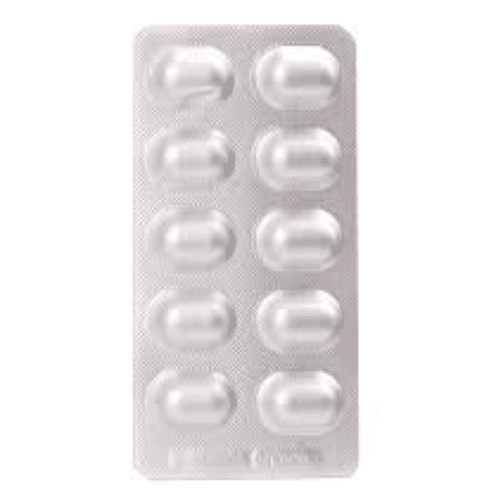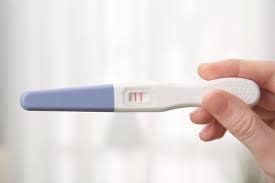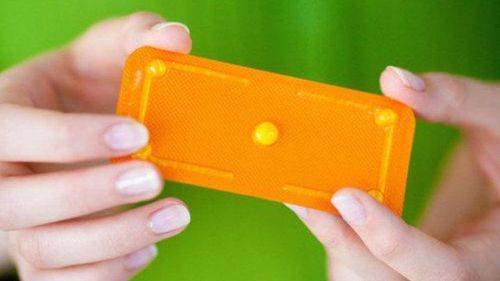This is an automatically translated article.
Kyleena Intrauterine is a small, flexible device placed in the uterus for the purpose of preventing pregnancy. It is used by women who want to use a long-term (up to 5 years) effective birth control method. Kyleena Intrauterine is also used to treat heavy menstrual bleeding in women who choose to use this method of birth control.
1. How to use Kyleena Intrauterine Device
Kyleena Intrauterine slowly releases a hormone (levonorgestrel) that is similar to a hormone that women normally make. This device helps prevent pregnancy by making the cervical fluid thicker, preventing sperm from moving, and reducing sperm viability to prevent sperm from reaching an egg (fertilization). Kyleena Intrauterine also changes the lining of the uterus (womb) to prevent a fertilized egg from attaching. If the fertilized egg does not attach to the uterus, it will pass out of the body. The device can also prevent ovulation, but this is not how Kyleena Intrauterine works. Using this product does not protect you or your partner from sexually transmitted diseases (such as HIV, gonorrhea, chlamydia).
Consult the instructions for use on the product label before you start using Kyleena Intrauterine. Consult your doctor or pharmacist if you have any questions.
The Kyleena Intrauterine device is placed in your uterus by medical professionals during a hospital visit. This device is kept in place for up to 5 years. Make a follow-up appointment 4 to 6 weeks after the device is placed to make sure it remains in the proper position.
Ask your doctor if you need to use a back-up form of birth control for the first 7 days after placing this device to prevent pregnancy until Kyleena Intrauterine has had enough time to work.
This device may sometimes move out of position or pop out on its own. After each period, do a check to make sure it's in place. Learn how to carefully check the position of this device from the product information or your doctor's instructions. If it comes out or if you suspect that the device is out of place, contact your doctor immediately and use a backup form of non-hormonal birth control (such as condoms, spermicide) to prevent pregnancy until otherwise directed by your doctor.
If you want to continue this method of birth control after 5 years, the old device needs to be removed and replaced with a new one. Either way, Kyleena Intrauterine should be discarded after 5 years of use. Medical professionals can remove the device whenever you want to stop using this method of birth control.
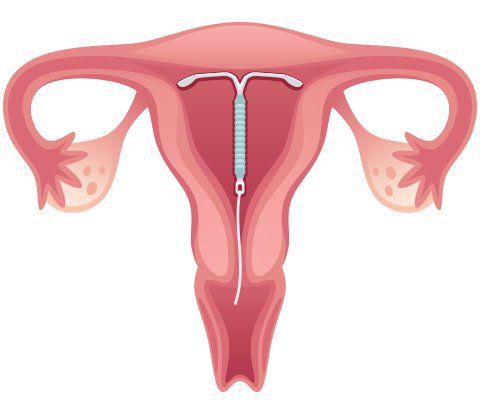
Kyleena Intrauterine được đặt vào tử cung của phụ nữ
2. Side effects
You may feel pain, bleeding or dizziness during and after placing the device. Abdominal pain, menstrual irregularities, and vaginal bleeding between periods (cheeks) may occur, especially during the first few weeks of use. Headache, nausea, breast tenderness, or weight gain may also occur. If any of these effects persist or worsen, contact your doctor immediately.
After your body adapts to this product, it is normal to have fewer bleeding days during your period and some women stop menstruating altogether. This will not affect your ability to get pregnant after you stop using Kyleena Intrauterine.
Remember that your doctor will allow you to use Kyleena Intrauterine because he or she has judged that the benefit to you outweighs the risk of side effects. Many people use this device without experiencing any serious side effects.
Tell your doctor right away if any of these serious side effects occur, including: Stomach/abdominal pain, vomiting, breast lump, mental/mood changes (such as: new/worsening depression), unusual changes in vaginal bleeding (such as continuous bleeding, sudden heavy bleeding, missed periods), dark urine, yellowing of the eyes/skin, unusual headache (including headache with vision changes/lack of coordination, worsening migraine, sudden/very severe headache) following the insertion of the Kyleena Intrauterine device.
Use of an intrauterine device (IUD) can increase your risk of getting a rare but serious pelvic infection (pelvic inflammatory disease -PID), which can cause permanent damage to your genitals and cause infertility. This risk is higher in women who have had multiple sex partners, either have a sexually transmitted infection (STD), or have had PID in the past. Tell your doctor right away if you experience symptoms of PID, including: unexplained fever/chills, lower abdominal/pelvic pain, pain during sex, genital sores, discharge abnormal vagina.
Rarely, a serious allergic reaction has occurred while you are using Kyleena Intrauterine. However, get medical help right away if you notice any of the following symptoms, including: Rash, itching/swelling (especially of the face/tongue/throat), severe dizziness, shortness of breath.
If you experience any unusual signs while using Kyleena Intrauterine, contact your doctor immediately.
3. Precautionary measures
Before using Kyleena Intrauterine, tell your doctor if you are allergic to levonorgestrel or to any other progestins (such as norethindrone, desogestrel); or if any other allergies. Kyleena Intrauterine may contain inactive ingredients, which can cause allergic reactions or other problems.
Thông báo với bác sĩ về tiền sử bệnh lý trước khi sử dụng Kyleena Intrauterine
Before using this product, tell your doctor about your medical history, especially if you are recently pregnant, currently breastfeeding, bleeding/blood disorder, high blood pressure, abnormal breasts often, cancer (especially endometrial or breast cancer), depression, diabetes, headaches/migraines, heart problems (such as heart valve disease, irregular heartbeats, previous heart attack), liver disease (including a tumor), previous ectopic pregnancy (ectopic pregnancy), stroke, unexplained vaginal bleeding, uterine problems ( such as fibroids, pelvic inflammatory disease (PID), conditions that weaken the immune system/increase the risk of infection (such as HIV, leukemia, intravenous drug abuse).
If you or your partner has another sex partner, Kyleena Intrauterine may not be the best birth control method for you. If you or your partner has a sexually transmitted disease (including HIV, gonorrhea, chlamydia), contact your doctor right away. Consult with your doctor whether you should continue to use this device for birth control.
Before surgery, tell your doctor about all the products you use (including prescription drugs, over-the-counter medicines, and herbal products). Also, if you are going to have an MRI test, tell the testing staff that you are using this device. The MRI exam schedule may need to be adjusted.
Kyleena Intrauterine should not be used while you are pregnant. Tell your doctor right away if you are pregnant or think you may be pregnant.
Women who are breastfeeding should consult their doctor before you use Kyleena Intrauterine.
4. Interaction
Interactions between Kyleena Intrauterine and certain medications may change the way Kyleena Intrauterine works or increase the risk of serious side effects. This article does not contain all of the possible drug interactions. Tell your doctor about all the products you use (including prescription/nonprescription drugs and herbal products) and share it with your doctor. Never start or stop Kyleena Intrauterine without your doctor's approval.
Please dial HOTLINE for more information or register for an appointment HERE. Download MyVinmec app to make appointments faster and to manage your bookings easily.
Reference source: webmd.com




